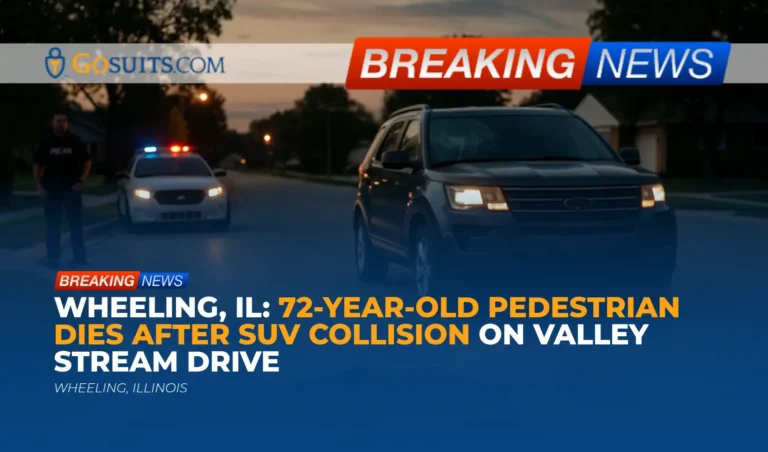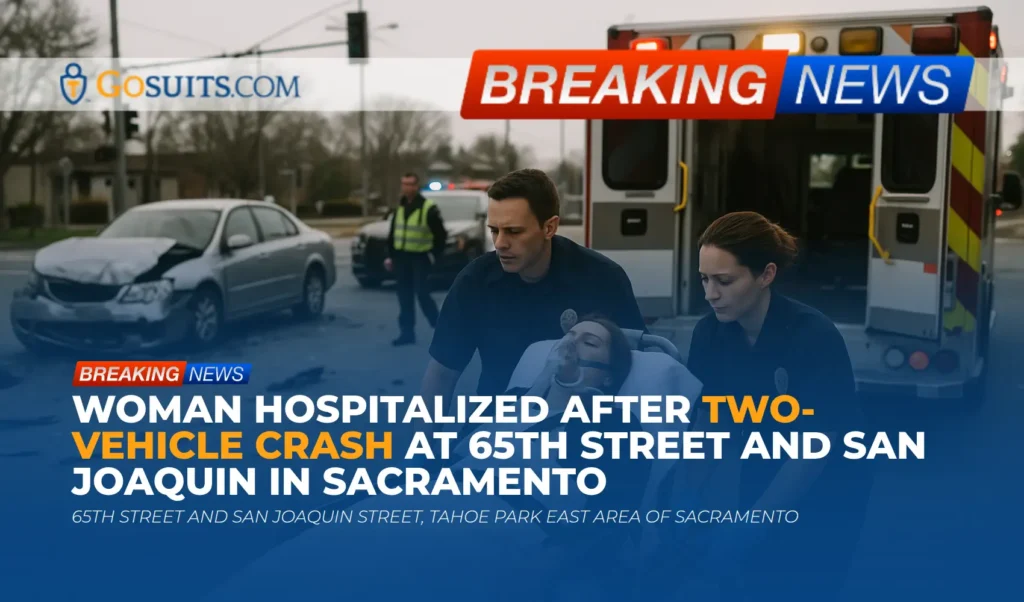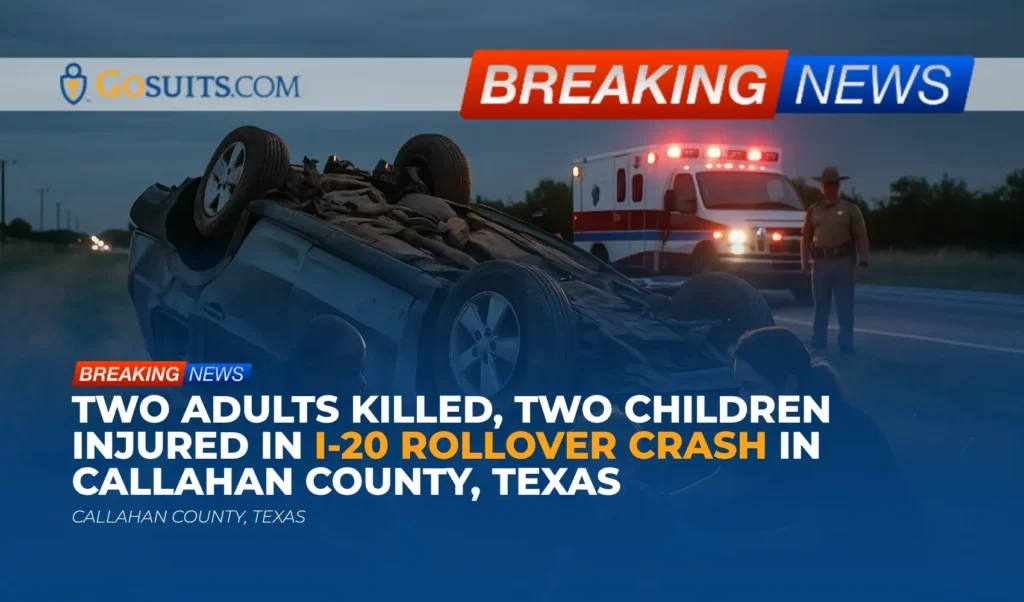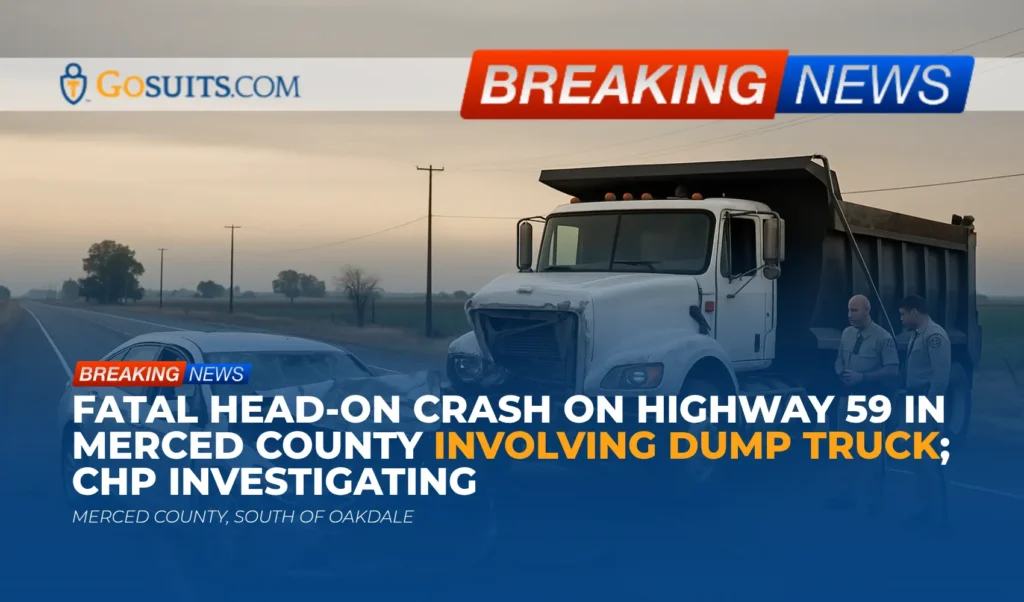- What we know about the Wheeling pedestrian collision
- Timeline and location context
- What investigators typically examine in pedestrian–SUV impacts
- Rights of injured pedestrians and grieving families under Illinois law
- Potential civil liability and insurance pathways
- How to preserve crucial evidence right away
- How to obtain official records and support
- Safety context: pedestrian risk at dusk and in suburban corridors
- Compassionate guidance on next steps after a fatal crash
- Commentary from Gosuits Wheeling, Illinois Personal Injury Attorney
- Why timely action matters now
What we know about the Wheeling pedestrian collision
A 72-year-old man from Geneva, Illinois was struck by a 2018 Ford Explorer on Valley Stream Drive in Wheeling on the evening of Monday, September 29. According to the Wheeling Police Department, the collision occurred shortly before 6:25 p.m. in the 1000 block of Valley Stream Drive. The pedestrian was transported to Advocate Lutheran General Hospital in Park Ridge with critical injuries and died at approximately 3:00 a.m. on Tuesday, September 30. Authorities indicated circumstances of the collision were unclear at the time of reporting, and the Wheeling Police Department Traffic Unit opened an investigation. No additional details have been released publicly.
Any loss of life in a pedestrian incident is devastating. Even as official findings are pending, families often need immediate, practical information. The sections below explain what investigators commonly look at in a pedestrian–SUV crash, what civil rights may be available under Illinois law, how insurance may apply, and where to obtain official records that can clarify what happened.
Timeline and location context
Based on police information, the incident timeline includes the following key points:
- Date and time: Monday, September 29, shortly before 6:25 p.m.
- Location: 1000 block of Valley Stream Drive, Wheeling, Illinois.
- Vehicle involved: 2018 Ford Explorer.
- Injury and care: The pedestrian sustained critical injuries and was transported to a regional trauma facility.
- Outcome: The pedestrian was pronounced deceased at about 3:00 a.m. on Tuesday, September 30.
- Status: The Wheeling Police Department Traffic Unit is investigating.
Evening light conditions around 6:25 p.m. in late September can range from daylight to dusk depending on weather and ambient lighting. Investigations typically note the state of street lighting, visibility, roadway design, and any traffic control devices present. None of those specifics have been released so far; this article does not infer facts beyond the police summary.
What investigators typically examine in pedestrian–SUV impacts
While every crash is unique, traffic investigators and reconstruction teams tend to review a consistent set of factors to understand whether driver error, pedestrian behavior, vehicle condition, or roadway environment contributed to the collision. Common areas of inquiry include:
- Point of impact and final rest positions: Skid marks, debris fields, and the locations where the vehicle and pedestrian came to rest can help estimate speed and timing.
- Lighting and visibility: Streetlight function, ambient lighting, weather, and sightlines. Evening collisions often raise questions about whether headlights were on, whether high or low beams were used appropriately, and whether visual obstructions existed.
- Crosswalks and traffic control: The presence of marked or unmarked crosswalks, stop signs, and signals. In Illinois, drivers must exercise due care to avoid pedestrians and yield at crosswalks when required by statute.
- Vehicle technology and data: Many vehicles, including SUVs like the Ford Explorer, may store crash-related information in an event data recorder. Investigators sometimes download data related to speed, braking, throttle, and seatbelt status.
- Driver attention and impairment: Cell phone usage, distraction, fatigue, or potential effects of alcohol or drugs are commonly examined through interviews, phone records when legally obtained, and laboratory testing where appropriate.
- Pedestrian path and behavior: Where the pedestrian was walking, whether crossing at a corner or midblock, and their direction of travel, as determined through witness statements, video, and physical evidence.
- Surrounding video: Doorbell cameras, commercial surveillance, and dashcams are increasingly valuable in reconstructing events, especially along residential corridors.
Families should know that certain evidence can be time-sensitive. Businesses may overwrite footage within days. Vehicle black box data can be lost if a vehicle is repaired or totaled before download. Early evidence preservation often shapes the accuracy of any later civil claims.
Rights of injured pedestrians and grieving families under Illinois law
Drivers’ duty of care toward pedestrians
Illinois law requires all drivers to exercise due care to avoid colliding with pedestrians and to take proper precaution when they see a person on the roadway. This duty includes warning where necessary and exercising caution around children or individuals who may be confused or incapacitated. See 625 ILCS 5/11-1003.1.
Drivers must also stop and yield in crosswalks under certain conditions, including when a pedestrian is on the driver’s side of the roadway or approaching so closely from the opposite half as to be in danger. See 625 ILCS 5/11-1002.
Wrongful death and survival claims
- Wrongful Death Act: Illinois permits designated survivors to bring a civil claim for the losses that the next of kin suffer because of a death caused by another’s wrongful act, neglect, or default. Recoverable losses can include loss of financial support and loss of society, and the Act recognizes grief, sorrow, and mental suffering. See the Illinois Wrongful Death Act, 740 ILCS 180.
- Survival Act: Separately, an Estate may pursue claims the decedent could have brought if they had lived, such as for conscious pain and suffering and medical expenses, through the Illinois Survival Act. See 755 ILCS 5/27-6.
Comparative fault
Illinois follows a modified comparative fault system. If a factfinder assigns a portion of responsibility to a pedestrian, recoverable damages may be reduced accordingly, and recovery is barred only if a party is found more than 50 percent at fault. See 735 ILCS 5/2-1116.
Time limits
Illinois law imposes deadlines for bringing civil claims, which can be shorter in particular circumstances. For claims against local public entities, a one-year limitations period may apply under the Local Governmental and Governmental Employees Tort Immunity Act. See 745 ILCS 10/8-101. Different statutes and exceptions can apply, so prompt review is important to understand the applicable timeframes.
Potential civil liability and insurance pathways
Possible liability theories in a pedestrian–SUV collision
- Negligent driving: Allegations may include failure to keep a proper lookout, unsafe speed for conditions, failure to yield, or distracted driving.
- Negligent roadway conditions: In limited circumstances, liability questions may involve roadway design, signage, or lighting. Claims involving public entities have distinct rules and defenses under Illinois law.
Insurance sources that may apply
- At-fault driver’s liability insurance: Bodily injury liability coverage is intended to address harm caused to others by the insured’s negligence, subject to policy limits and defenses.
- Uninsured/underinsured motorist (UM/UIM): Illinois auto policies commonly include UM/UIM coverage that may protect pedestrians if the at-fault driver lacks insurance or carries insufficient limits. This can apply even though the injured person was not in a vehicle at the time.
- Medical payments (MedPay): Some policies include no-fault MedPay that can assist with initial medical expenses. Terms vary by policy.
- Wrongful death and survival damages: These categories of damages are claimed via civil actions under the statutes noted above and are typically paid, if proven, by responsible parties and their insurers, subject to policy terms and applicable law.
Insurance adjusters may contact involved families soon after a crash. It is generally prudent to consult an attorney before speaking with any insurance company. Statements given early can be recorded and may be used later to limit or dispute a claim. An initial consultation can help clarify rights, coverage, and strategy for communicating with insurers.
How to preserve crucial evidence right away
Important evidence can disappear quickly. Taking steps to preserve it can make a meaningful difference in understanding what happened and protecting civil rights. Common steps include:
- Send preservation notices: Written requests can ask a driver, their insurer, and any known businesses near the scene to preserve vehicle data, dashcam footage, and surveillance video that may have captured the incident.
- Document the scene: If safe, photographs of the roadway, lighting, traffic control signs, and any skid marks or debris can be helpful, especially if done promptly and then again at a similar time of day.
- Identify witnesses: Note names, contact information, and any initial observations. Memories fade quickly; early contact matters.
- Secure vehicle inspection: If the involved SUV is accessible, ensure it is not altered, repaired, or destroyed before necessary inspections and data downloads can be performed.
- Request public records: Police reports, 911 call logs, and, where applicable, medical examiner findings often provide objective timelines and details.
How to obtain official records and support
Crash report and investigation materials
Crash reports are typically generated by the investigating law enforcement agency. In this event, that is the Wheeling Police Department Traffic Unit. Each Illinois police department has its own process for releasing reports, supplemental narratives, photographs, and, where available, diagrammatic reconstructions.
- How to request: Contact the investigating agency and ask about obtaining the traffic crash report number, availability timelines, and whether supplemental materials can be requested. If materials are not released routinely, they may be requested under the Illinois Freedom of Information Act (FOIA). The Illinois Attorney General provides guidance on FOIA rights and how to request public records at illinoisattorneygeneral.gov/government/foia.html.
- What to ask for: The initial crash report, officer narratives, scene photographs, measurements, citations issued if any, and any referenced videos. Some items may be withheld while an active investigation is ongoing, but it is still useful to submit requests early.
Autopsy, medical examiner, or coroner records
Wheeling lies within Cook and Lake counties. Depending on jurisdiction, fatality investigations are handled by the Cook County Medical Examiner or the Lake County Coroner.
- Cook County Medical Examiner: Information about requesting reports, including autopsy and toxicology when applicable, is available through the county’s official site at cookcountyil.gov/agency/medical-examiner.
- Lake County Coroner: Procedures for obtaining reports can be reviewed at lakecountyil.gov/153/Coroner.
These records can provide objective medical findings that help establish injury mechanisms and timelines. Availability may depend on the status of the investigation and next-of-kin authorization.

Death certificates
Certified death certificates are often necessary for insurance claims, estate matters, and other administrative needs. The Illinois Department of Public Health explains how to obtain death certificates at dph.illinois.gov/topics-services/birth-death-other-records/death-certificates.html.
911 audio and dispatch logs
Emergency communication centers maintain recordings and CAD logs documenting calls, dispatch times, and unit arrivals. These may be requested from the appropriate public safety communications agency. Some materials may be subject to redactions or temporary withholding while an investigation is active, but early requests can help ensure preservation. FOIA guidance from the Illinois Attorney General linked above applies.
Traffic safety and roadway data
For broader context, state and federal agencies provide data on pedestrian safety and crash trends:
- Illinois Department of Transportation (IDOT): IDOT publishes annual crash facts and safety analyses for public review at idot.illinois.gov.
- National Highway Traffic Safety Administration (NHTSA): NHTSA’s Fatality Analysis Reporting System and Traffic Safety Facts provide national data on pedestrian injuries and fatalities at nhtsa.gov/research-data/fatality-analysis-reporting-system-fars.
- Centers for Disease Control and Prevention (CDC): The CDC maintains pedestrian safety resources and statistics at cdc.gov/transportationsafety/pedestrian_safety/index.html.
Safety context: pedestrian risk at dusk and in suburban corridors
National and state data show pedestrian risk is elevated during low-light periods and along multi-lane suburban roads with higher speed limits and more complex traffic patterns. Evening hours bring glare, shadows, and visual contrast challenges. Larger vehicles, including SUVs, are associated in national analyses with higher pedestrian fatality risks due to front-end geometry and impact points.
Nationally, thousands of pedestrian lives are lost each year. According to federal safety sources, the United States has seen alarming increases in pedestrian fatalities over the past decade. The CDC reports that in 2021, 7,388 pedestrians were killed in traffic crashes nationwide, representing about one death every 71 minutes, with tens of thousands more treated in emergency departments for nonfatal injuries. See the CDC’s pedestrian safety overview at cdc.gov/transportationsafety/pedestrian_safety/index.html. NHTSA’s FARS data further outlines patterns related to location, lighting, and vehicle type; see nhtsa.gov/research-data/fatality-analysis-reporting-system-fars.
On the local level, state transportation agencies like IDOT compile annual analyses of crash trends that can inform engineering measures such as improved crosswalk visibility, traffic calming, and lighting upgrades. While such improvements cannot change the outcome already suffered, they can guide community discussions to reduce the risk of similar tragedies.
Compassionate guidance on next steps after a fatal crash
After a fatal pedestrian crash, it is common to feel overwhelmed by logistics while managing grief. The following steps are shared to help organize information and protect rights:
- Organize key documents: Store hospital records, discharge summaries, and any personal property returned by the hospital or police in a single, secure place. Keep copies of bills and receipts related to medical care and final arrangements.
- Note agency contacts: Record the case number and the primary contact at the investigating police department. If a medical examiner or coroner is involved, ask about expected timelines for reports.
- Preserve communications: If an insurance company reaches out, log the date and time, the adjuster’s name, and what was discussed. Consider waiting to provide any recorded statement or signed authorization until after speaking with an attorney. What is said to an insurer can be used later in claim evaluations and negotiations.
- Identify potential insurance coverage: Locate the decedent’s auto policy, if any, and any household policies. These may include UM/UIM or MedPay benefits that could be relevant. The driver’s liability policy information is often listed in the police report once available.
- Consider estate steps: Wrongful death and survival claims often require opening an estate in the county where the decedent resided or where the crash occurred. Families often consult with counsel to determine appropriate representatives and filings.
- Seek support: In addition to legal and administrative steps, community and counseling resources can help families process grief and trauma. County health departments and local support organizations may have listings for bereavement services.
Commentary from Gosuits Wheeling, Illinois Personal Injury Attorney
Our hearts are with the family and community members affected by this loss in Wheeling. This article is offered for educational purposes and general information. Every case is unique, and thoughtful, case-specific guidance can help families understand their options.
From a civil injury perspective, a pedestrian fatality on a residential or collector street raises immediate questions about visibility, driver attention, speed relative to conditions, and crosswalk control. Illinois law places a clear duty on drivers to exercise due care around pedestrians. When circumstances are unclear, it becomes especially important to secure objective evidence early: scene photos at a similar time of day, doorbell or storefront video, and data from the SUV’s event recorder. These materials often resolve uncertainties and help determine whether negligence by a driver or another party contributed to the outcome.
Insurance companies and large corporate entities are sophisticated repeat players in these situations. They move quickly to collect statements, obtain authorizations, and frame the narrative. Individuals encountering this for the first time may not realize that seemingly routine questions can influence later liability decisions or damage evaluations. Adjusters may request broad medical releases or recorded interviews; those materials can later be cited to minimize or dispute a claim. Having a seasoned advocate explain coverage, limit unnecessary disclosures, and coordinate communications can balance the process and reduce avoidable pitfalls.
A no-cost initial consultation can be invaluable. It allows families to understand applicable laws, deadlines, and evidence needs without commitment or pressure. It is also an opportunity to discuss insurance layers, including potential UM/UIM benefits, and to plan a careful approach to statements or authorizations. Even if no claim is ultimately pursued, an early, informed conversation helps protect against missteps at a time when it is difficult to absorb complex information.
Why timely action matters now
- Evidence disappears quickly: Many security systems overwrite video within days. Vehicles can be repaired or salvaged, erasing onboard data. Acting promptly to request preservation helps ensure an accurate record can be built.
- Deadlines apply: Civil claims are governed by statutes of limitation, and some claims against public entities can have shorter timelines. Understanding applicable deadlines early prevents accidental forfeiture of rights.
- Insurance communications carry risk: Early recorded statements and broad authorizations can shape coverage and liability decisions. A careful plan for communications reduces the chance of unintended consequences.
- Structured next steps reduce stress: A clear checklist for records, contacts, and benefits can bring order to a difficult time and prevent overlooked details that later become critical.
- Community safety benefits: Prompt reporting and documentation can also assist agencies in identifying roadway factors that might be improved to protect others in the future.
What to do now, in practical terms:
- Request the crash report and case number from the investigating agency and ask about anticipated release dates for supplemental materials.
- Submit preservation requests to nearby businesses and to the insurer for the 2018 Ford Explorer, asking them to retain any video, telematics, and event data recorder information.
- Organize policy information for any auto insurance in the household, noting potential UM/UIM and MedPay benefits.
- Consult an attorney before speaking with insurers about the facts of the crash; what is said can be used later in ways that are hard to anticipate without guidance.
- Track all expenses and communications, including medical, funeral, and transportation costs, and maintain a log of every call and letter received.
- Identify the proper medical examiner or coroner office based on jurisdiction and follow their process for requesting reports when available.
Additional legal context and citations
Key Illinois statutes related to pedestrian incidents
- Drivers’ duty to avoid pedestrians: 625 ILCS 5/11-1003.1
- Pedestrian right-of-way at crosswalks: 625 ILCS 5/11-1002
- Comparative fault framework: 735 ILCS 5/2-1116
- Wrongful Death Act: 740 ILCS 180
- Survival Act: 755 ILCS 5/27-6
- Limitations period for local public entities: 745 ILCS 10/8-101
- FOIA guidance from the Illinois Attorney General: illinoisattorneygeneral.gov/government/foia.html
These resources are provided for public reference and to help readers locate the official text of the statutes and guidance mentioned above.
Practical questions families often consider
What remains unknown
As of the current information, the public has not been told whether there were witnesses, whether a crosswalk was involved, the lighting conditions, or what any vehicle data might show. We do not speculate on these facts. The official investigation will address these details, and the process of obtaining public records can help fill in the timeline.
How long does an investigation take?
Timelines vary. Initial crash reports can be available relatively quickly, while full reconstruction reports, autopsy and toxicology where applicable, and data downloads can take weeks or months. Families can stay updated by noting the case number and periodically checking with the investigating unit, while also submitting early requests to preserve data and video.

What if the pedestrian was outside a crosswalk?
Illinois’ comparative fault system weighs the conduct of each party. Even outside a marked crosswalk, drivers still have a duty to exercise due care to avoid collision with pedestrians. Specific outcomes depend on the full set of facts and applicable law.
If the driver’s insurer calls, what should be said?
It is generally wise to consult an attorney before providing statements or signing authorizations. Insurance companies record communications and can use early statements when evaluating liability and damages. A brief response acknowledging receipt and indicating that further communication will follow after counsel is consulted can protect against unintended consequences.
Community safety reflections
While enforcement and education are important, environmental design and operations often drive safety outcomes. Many communities reduce pedestrian risk through measures such as improved lighting, high-visibility crosswalks, speed management, curb extensions, and pedestrian refuge islands. Data-driven programs at the state level, including those published by IDOT, help prioritize locations where enhancements can save lives. Community members can consult idot.illinois.gov for statewide initiatives and resources that inform local safety decisions.
In the aftermath of a tragedy, it is natural to ask whether similar events can be prevented. Road safety is a shared responsibility across drivers, pedestrians, engineers, and policymakers. Preserving evidence and participating in transparent investigations help both the family and the community learn meaningful lessons.






